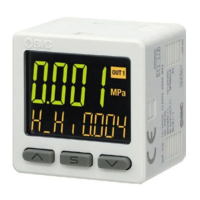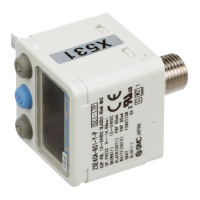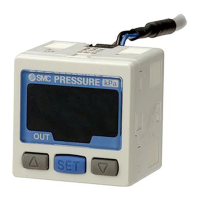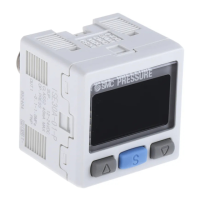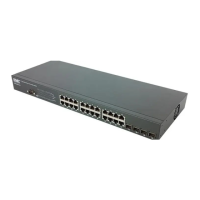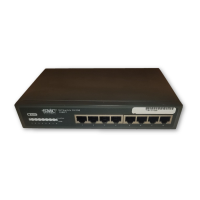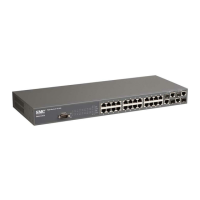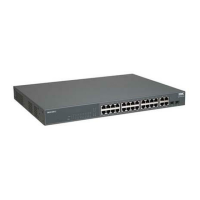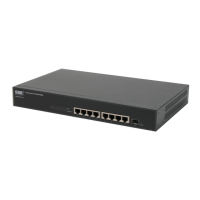-8-
PS##-OMM0003-A
∗Maintenance
•Turn off the power supply, stop the supplied air, exhaust the residual pressure and verify the release of
air before performing maintenance.
There is a risk of unexpected malfunction.
•Perform regular maintenance and inspections.
There is a risk of unexpected malfunction.
•Perform drainage regularly.
If condensate enters the secondary side, it can cause operating failure of pneumatic equipment.
•Do not use solvents such as benzene, thinner etc. to clean the Pressure switch.
They could damage the surface of the body and erase the markings on the body.
Use a soft cloth to remove stains. For heavy stains, use a cloth soaked with diluted neutral detergent and fully
squeezed, then wipe up the stains again with a dry cloth.
∗Other
•If there is a possibility of water or drainage getting in, narrow the diameter of the piping to the Pressure
switch, or make an orifice in the middle of the piping.
Although this Pressure switch uses stainless diaphragm pressure sensor which is not damaged by water, the drain
contained in the air or water during vacuum release after confirming vacuuming collides with the pressure sensor
and the inertia force of water or air containing the drain can damage the pressure sensor, and correct display of the
pressure may not be available.
Extra attention is needed when the rear surface piping type is used.
•The use of a resin piping can cause static electricity depending on the fluid.
Therefore, when connecting the Pressure switch, take appropriate measures against static electricity
and separate the grounding for the Pressure switch from the grounding for other equipment which may
generate a strong electromagnetic noise or high frequency.
Otherwise, static electricity may damage the Pressure switch.
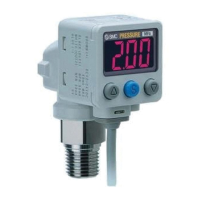
